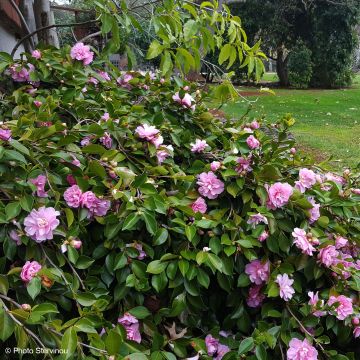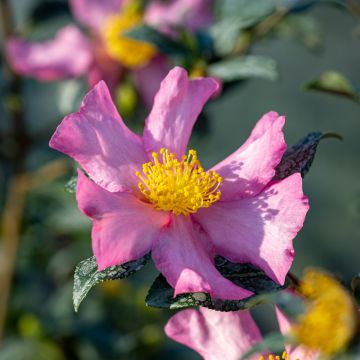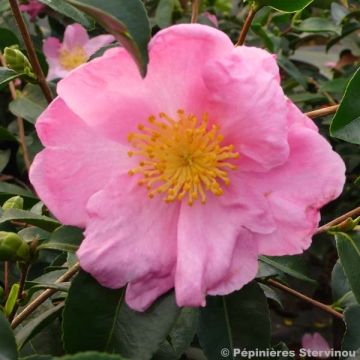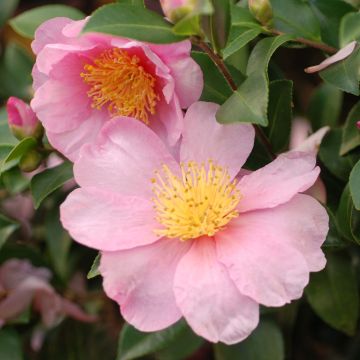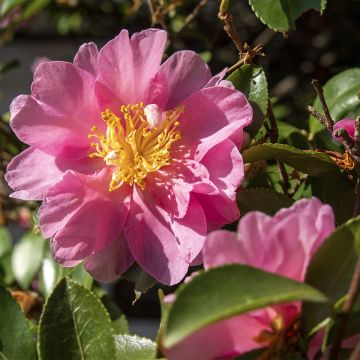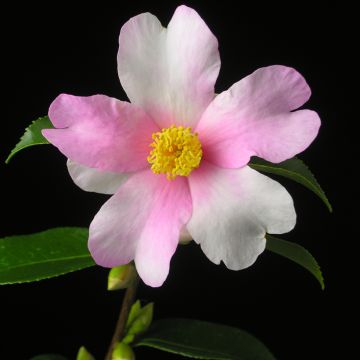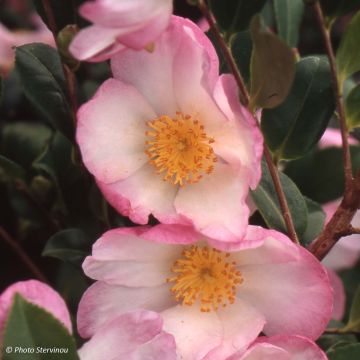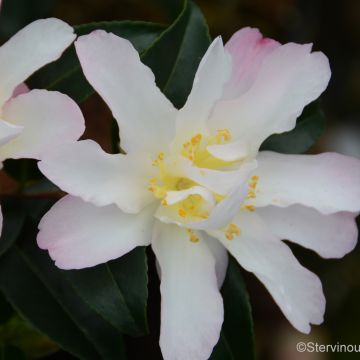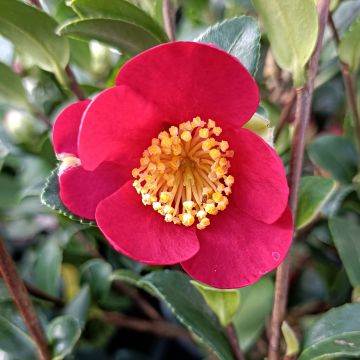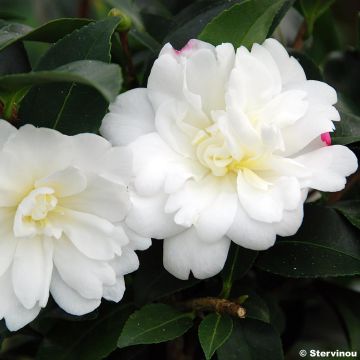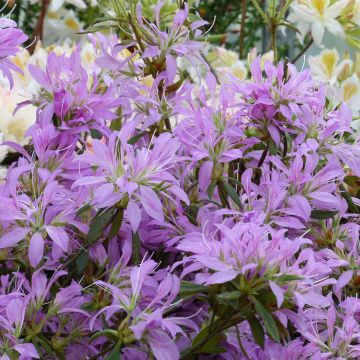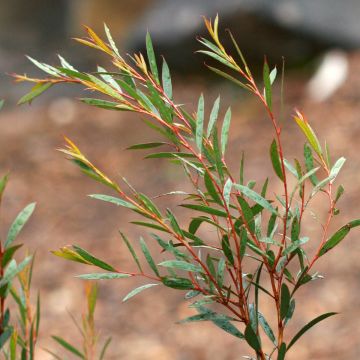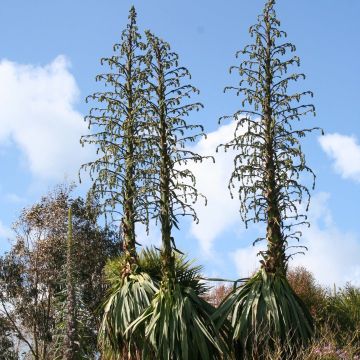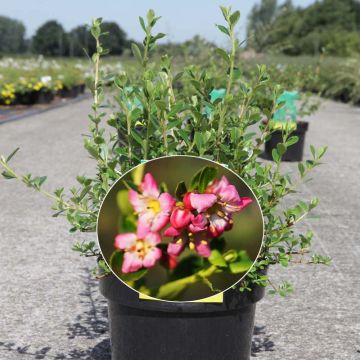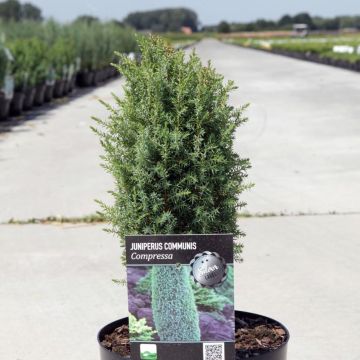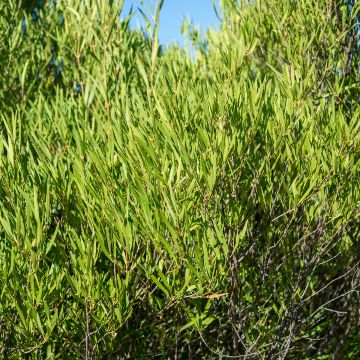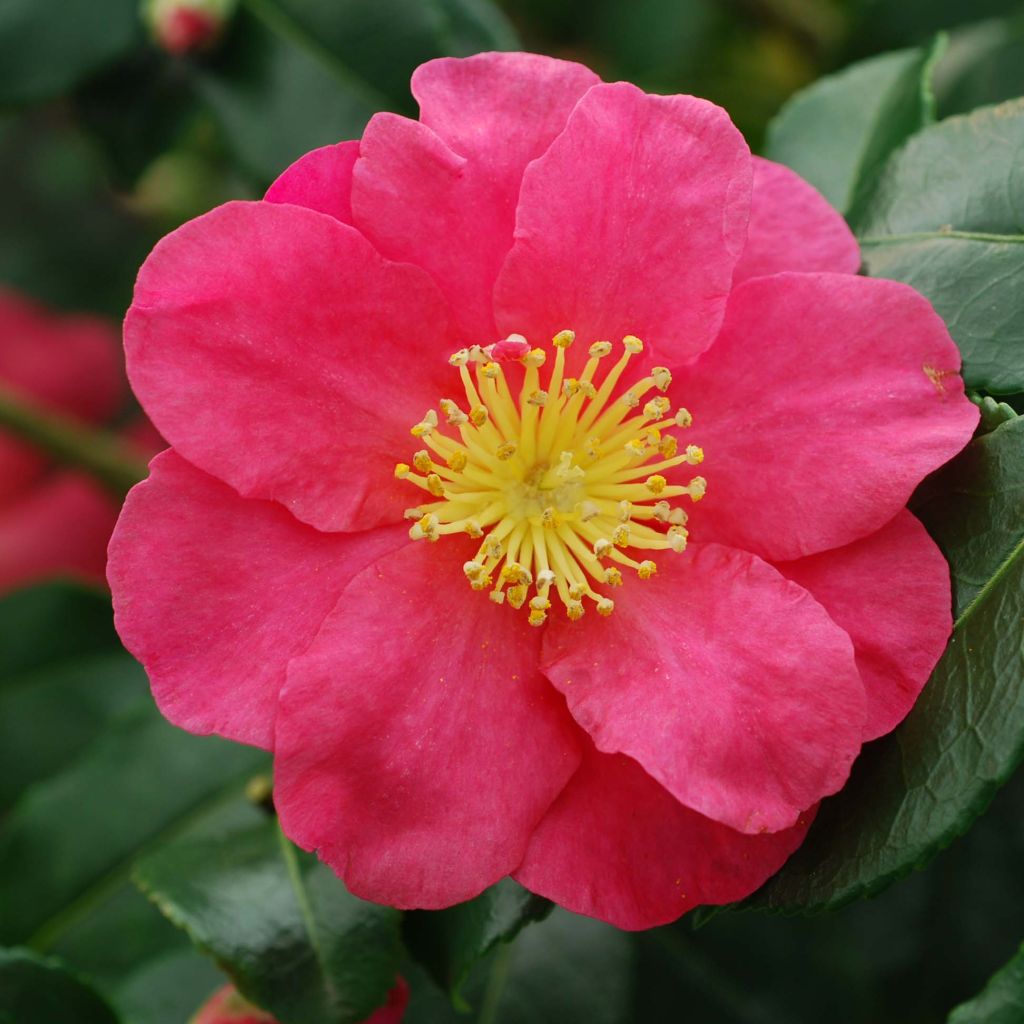

Camellia sasanqua Sekiyo
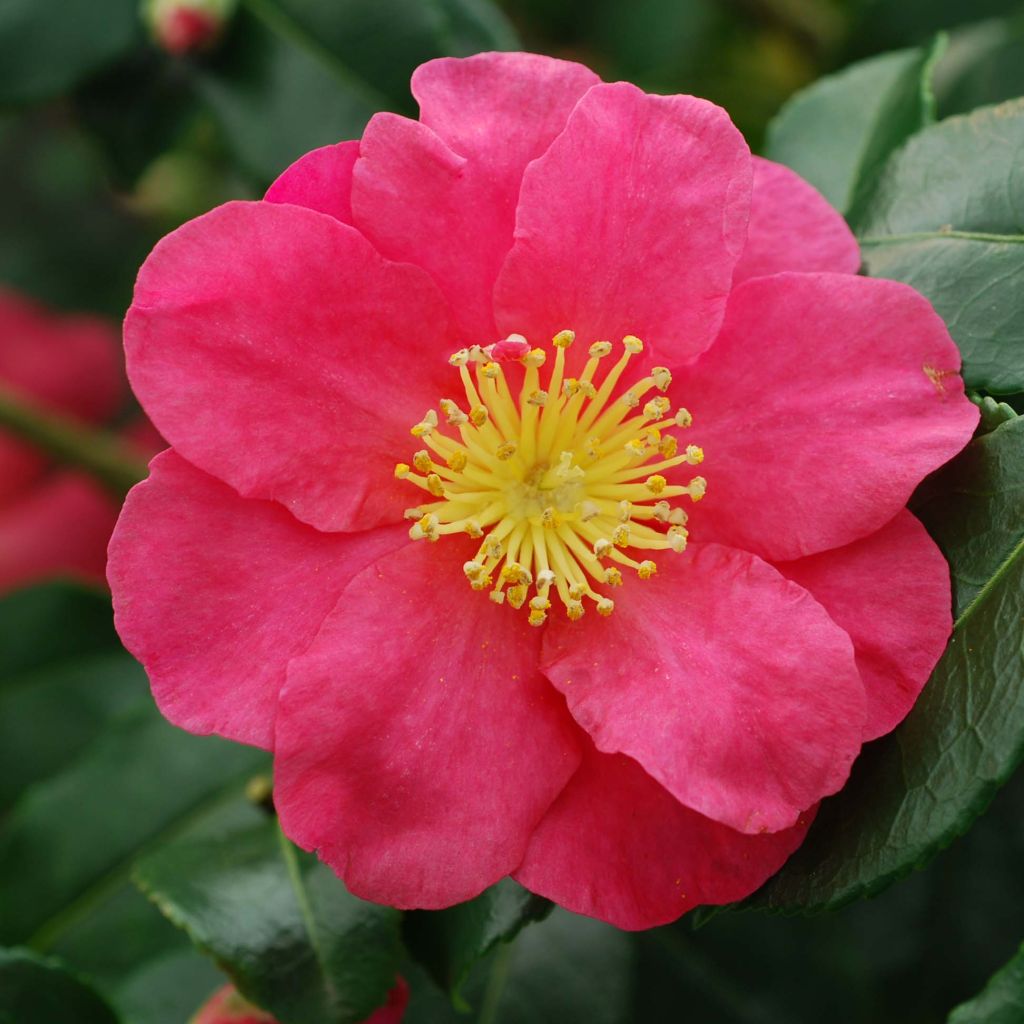

Camellia sasanqua Sekiyo
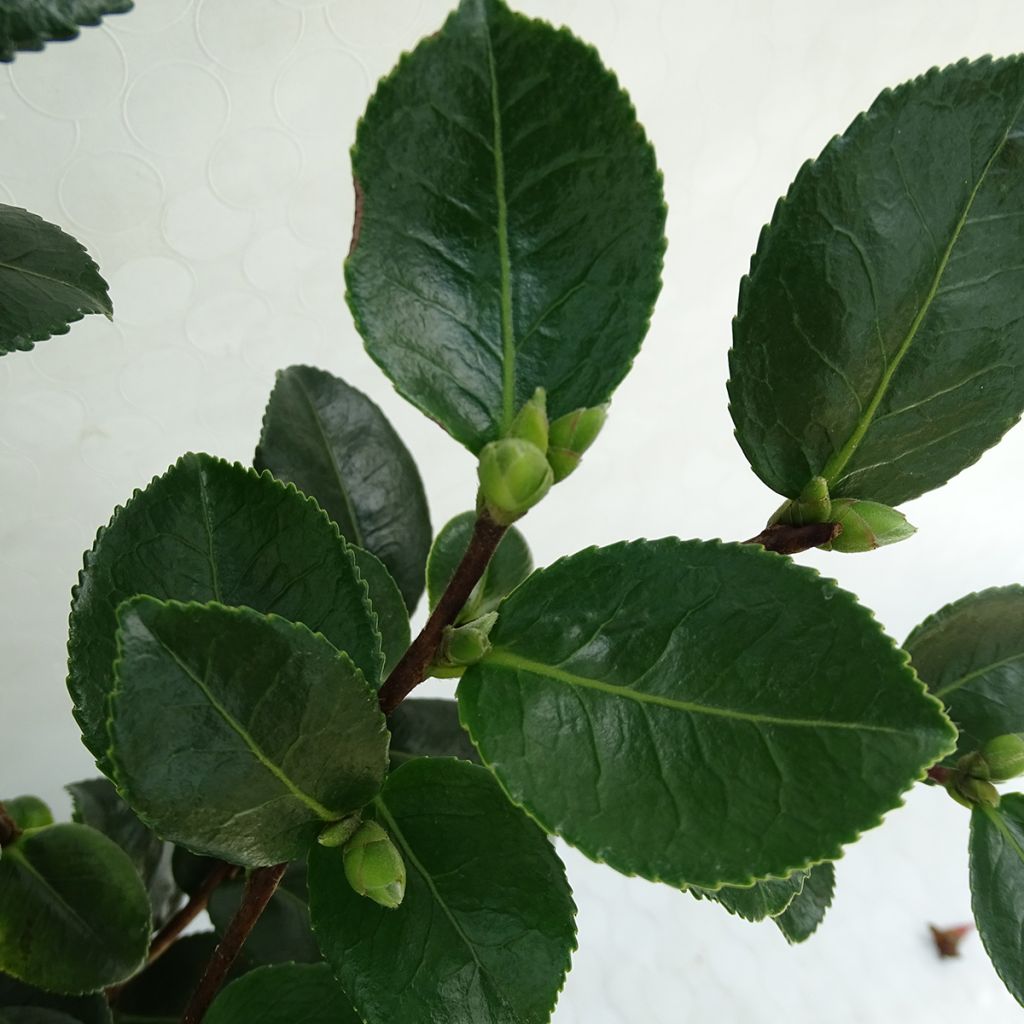

Camellia sasanqua Sekiyo
Camellia sasanqua Sekiyo
Camellia sasanqua Sekiyo
Autumn Camellia, Christmas Camellia
Why not try an alternative variety in stock?
View all →This plant carries a 24 months recovery warranty
More information
We guarantee the quality of our plants for a full growing cycle, and will replace at our expense any plant that fails to recover under normal climatic and planting conditions.
From €5.90 for pickup delivery and €6.90 for home delivery
Express home delivery from €8.90.

Does this plant fit my garden?
Set up your Plantfit profile →
Description
Camellia sasanqua 'Sekiyo' is one of the autumn camellias with the earliest and most colourful blooms. This variety produces large flowers of a deep and brilliant raspberry pink, single to semi-double, slightly tousled, around a fiery heart of golden stamens. This pink, flirting with fuchsia, has a bluish component in perfect harmony with the evergreen foliage, dark green and glossy. They bloom from September onwards and continue for 3 months on a healthy and vigorous bush of beautiful stature, attractive all year round. It is robust and capable of adapting to windy or sunny situations, however it requires cool soil in summer that is free of limestone. A robust and healthy variety, superb as a background in flower beds, planted as an informal hedge, or grown in a very large pot, regardless of your garden style.
The 'Sekiyo' camellia, introduced in Japan in 1958, is one of the many hybrids derived from the species Camellia sasanqua, which belongs to the family of tea plants. This plant forms a bush with a habit that is bushy, upright and flexible. Its vigorous growth is quite fast, allowing it to reach 1.20 m (4 ft) in height and 1 m (3 ft) in width in 10 years. Adult size can be up to 1.60 m (5 ft) or more in favourable conditions. Flowering, both early and particularly colourful for an autumn camellia, takes place from September to November. This bush produces large flowers measuring 7 to 8 cm (3 in) wide, with a pleasant fragrance, formed by a corolla of deep pink and undulate petals, sometimes adorned with a few additional small petals around a very visible golden yellow stamen centre. They are not long-lasting but continuously renew on the plant, leaving a carpet of petals on the ground like Japanese cherry trees. The foliage, dense, is evergreen in winter. It is composed of dark green, glossy, ovate and leathery leaves, dentate, paler on the underside.
A shrub for a humid oceanic climate and non-calcereous soil, Camellia x sasanqua 'Sekiyo' tolerates the sun and windy sites better than other camellias. It performs better in mild climates than in cold regions, where its hardiness is sometimes lacking and its flowering can be destroyed. Wherever the winter is not too harsh, it can be installed in the garden as a standalone plant, or combined with other ericaceous plants (Rhododendron, azaleas, Hydrangea, Hamamelis) in a flowering hedge. The 'Sekiyo' camellia deserves a prominent location at the entrance to the garden or house, or alongside a pathway. You can dress its base with autumn bulbs such as colchicums or Naples cyclamens. In cold regions it can be installed on a balcony or terrace, and then brought indoors to an unheated veranda or cold greenhouse during the flowering period.
Report an error about the product description
Camellia sasanqua Sekiyo in pictures




Plant habit
Flowering
Foliage
Botanical data
Camellia
sasanqua
Sekiyo
Theaceae
Autumn Camellia, Christmas Camellia
Cultivar or hybrid
Other Autumn Camellia
Planting and care
Camellia sasanqua is ideal for coastal, humid climates, and limestone-free soil. If these conditions are not met, it will languish and never reach its full potential. It should be placed in a somewhat shaded area, sheltered from cold, drying winds. You can cultivate it in full sun, but the roots must remain cool. Plant it in a cool, humus-rich, acidic, and well-drained soil. Do not plant the bush too deeply; the top of the root ball should be covered with 3 cm (1.2 in) of soil. In winter cover it with a 5 to 7 cm (2 to 2.8 in) thick mulch of leaf soil and crushed bark. Beware of frost which can damage flowers and buds. During dry periods, water to prevent the dropping of flower buds. Camellia sasanqua can withstand temperatures as low as -12°C (10.4 °F) for a short period of time. It can be susceptible to root rot, leaf spots, and viruses. It can be attacked by aphids and scale insects that cause sooty mould, as well as by weevils that chew the edges of the leaves.
Planting period
Intended location
Care
-
, onOrder confirmed
Reply from on Promesse de fleurs
Evergreen shrubs
Haven't found what you were looking for?
Hardiness is the lowest winter temperature a plant can endure without suffering serious damage or even dying. However, hardiness is affected by location (a sheltered area, such as a patio), protection (winter cover) and soil type (hardiness is improved by well-drained soil).

Photo Sharing Terms & Conditions
In order to encourage gardeners to interact and share their experiences, Promesse de fleurs offers various media enabling content to be uploaded onto its Site - in particular via the ‘Photo sharing’ module.
The User agrees to refrain from:
- Posting any content that is illegal, prejudicial, insulting, racist, inciteful to hatred, revisionist, contrary to public decency, that infringes on privacy or on the privacy rights of third parties, in particular the publicity rights of persons and goods, intellectual property rights, or the right to privacy.
- Submitting content on behalf of a third party;
- Impersonate the identity of a third party and/or publish any personal information about a third party;
In general, the User undertakes to refrain from any unethical behaviour.
All Content (in particular text, comments, files, images, photos, videos, creative works, etc.), which may be subject to property or intellectual property rights, image or other private rights, shall remain the property of the User, subject to the limited rights granted by the terms of the licence granted by Promesse de fleurs as stated below. Users are at liberty to publish or not to publish such Content on the Site, notably via the ‘Photo Sharing’ facility, and accept that this Content shall be made public and freely accessible, notably on the Internet.
Users further acknowledge, undertake to have ,and guarantee that they hold all necessary rights and permissions to publish such material on the Site, in particular with regard to the legislation in force pertaining to any privacy, property, intellectual property, image, or contractual rights, or rights of any other nature. By publishing such Content on the Site, Users acknowledge accepting full liability as publishers of the Content within the meaning of the law, and grant Promesse de fleurs, free of charge, an inclusive, worldwide licence for the said Content for the entire duration of its publication, including all reproduction, representation, up/downloading, displaying, performing, transmission, and storage rights.
Users also grant permission for their name to be linked to the Content and accept that this link may not always be made available.
By engaging in posting material, Users consent to their Content becoming automatically accessible on the Internet, in particular on other sites and/or blogs and/or web pages of the Promesse de fleurs site, including in particular social pages and the Promesse de fleurs catalogue.
Users may secure the removal of entrusted content free of charge by issuing a simple request via our contact form.
The flowering period indicated on our website applies to countries and regions located in USDA zone 8 (France, the United Kingdom, Ireland, the Netherlands, etc.)
It will vary according to where you live:
- In zones 9 to 10 (Italy, Spain, Greece, etc.), flowering will occur about 2 to 4 weeks earlier.
- In zones 6 to 7 (Germany, Poland, Slovenia, and lower mountainous regions), flowering will be delayed by 2 to 3 weeks.
- In zone 5 (Central Europe, Scandinavia), blooming will be delayed by 3 to 5 weeks.
In temperate climates, pruning of spring-flowering shrubs (forsythia, spireas, etc.) should be done just after flowering.
Pruning of summer-flowering shrubs (Indian Lilac, Perovskia, etc.) can be done in winter or spring.
In cold regions as well as with frost-sensitive plants, avoid pruning too early when severe frosts may still occur.
The planting period indicated on our website applies to countries and regions located in USDA zone 8 (France, United Kingdom, Ireland, Netherlands).
It will vary according to where you live:
- In Mediterranean zones (Marseille, Madrid, Milan, etc.), autumn and winter are the best planting periods.
- In continental zones (Strasbourg, Munich, Vienna, etc.), delay planting by 2 to 3 weeks in spring and bring it forward by 2 to 4 weeks in autumn.
- In mountainous regions (the Alps, Pyrenees, Carpathians, etc.), it is best to plant in late spring (May-June) or late summer (August-September).
The harvesting period indicated on our website applies to countries and regions in USDA zone 8 (France, England, Ireland, the Netherlands).
In colder areas (Scandinavia, Poland, Austria...) fruit and vegetable harvests are likely to be delayed by 3-4 weeks.
In warmer areas (Italy, Spain, Greece, etc.), harvesting will probably take place earlier, depending on weather conditions.
The sowing periods indicated on our website apply to countries and regions within USDA Zone 8 (France, UK, Ireland, Netherlands).
In colder areas (Scandinavia, Poland, Austria...), delay any outdoor sowing by 3-4 weeks, or sow under glass.
In warmer climes (Italy, Spain, Greece, etc.), bring outdoor sowing forward by a few weeks.

































